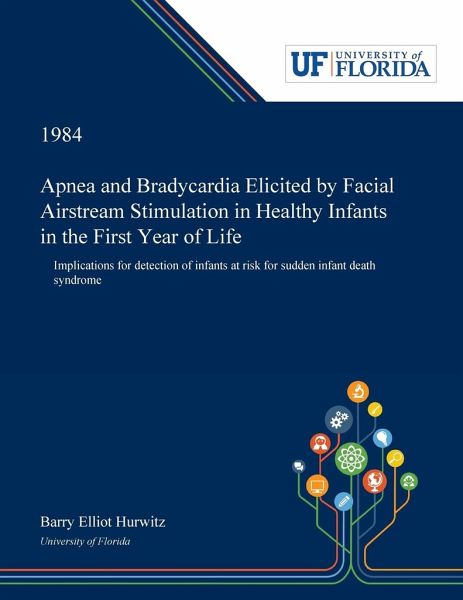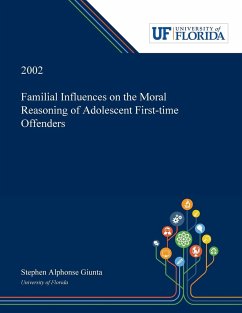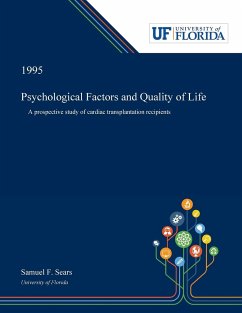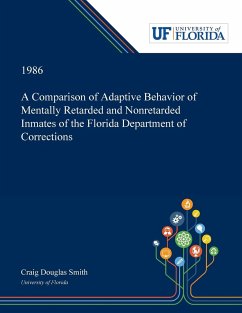
Apnea and Bradycardia Elicited by Facial Airstream Stimulation in Healthy Infants in the First Year of Life
Implications for Detection of Infants at Risk for Sudden Infant Death Syndrome

PAYBACK Punkte
34 °P sammeln!
Abstract: Cardiorespiratory responses to airstream stimulation (10-seconds, 1.06 psi) were observed in 52 newborn (NB), 2-4 and 8-12 month-old healthy infants. Two areas of stimulation were compared: the facial region, which included the forehead, eyelids and nose, and the abdominal region rostral to the umbilicus, which served as a control stimulation site. The infants were tested while asleep, during which EKG, heart rate and respiration were recorded. The results revealed that, in both NB and 2-4 month infants, facial cooling with an airpuff elicited apnea with greater frequency and duratio...
Abstract: Cardiorespiratory responses to airstream stimulation (10-seconds, 1.06 psi) were observed in 52 newborn (NB), 2-4 and 8-12 month-old healthy infants. Two areas of stimulation were compared: the facial region, which included the forehead, eyelids and nose, and the abdominal region rostral to the umbilicus, which served as a control stimulation site. The infants were tested while asleep, during which EKG, heart rate and respiration were recorded. The results revealed that, in both NB and 2-4 month infants, facial cooling with an airpuff elicited apnea with greater frequency and duration than did the control airpuff. Apnea occurred on about 27,2% of facial trials compared to '-'.8% of control trials. The duration of apnea was twice as long in the 2-4 month infants as in the NBs. By 8-12 months the facial airpuff still elicited apnea more reliably than did the abdominal airpuff but with reduced frequency of 8.9% and 1.9% respectively. The duration of apnea, however, was maintained at the longer duration seen with the 2-4 month infants. Bradycardia on trials when apnea was elicited differed in magnitude between age groups such that the 2-4 and 8-12 month infants decelerated to about -15 bpm; whereas no bradycardic response to apnea was displayed by the NBs. It has been demonstrated that in healthy sleeping NB and 2-4 month infants an airstream directed to the face can elicit apnea. However, by 8-12 months facial cooling does not have as great an effect on inhibition of respiration. Although apnea can be elicited in the NBs by facial airpuff, this apnea was brief and resulted in no change in cardiac response. Therefore, at 2-4 months, which is the age of greatest vulnerability for Sudden Infant Death Syndrome (SIDS) , the airpuff was likely to produce more frequent, prolonged apnea with concomitant bradycardia. It has been suggested that SIDS infants produce prolonged apnea because they have a higher threshold for hypoxia. Therefore, by eliciting apnea with facial cooling, it may De possible to identify a predisposition to SIDS by analysis of the magnitude of cardiorespiratory change in. infants with a history of prolonged apnea. Dissertation Discovery Company and University of Florida are dedicated to making scholarly works more discoverable and accessible throughout the world. This dissertation, "Apnea and Bradycardia Elicited by Facial Airstream Stimulation in Healthy Infants in the First Year of Life" by Barry Elliot Hurwitz, was obtained from University of Florida and is being sold with permission from the author. A digital copy of this work may also be found in the university's institutional repository, IR@UF. The content of this dissertation has not been altered in any way. We have altered the formatting in order to facilitate the ease of printing and reading of the dissertation.














